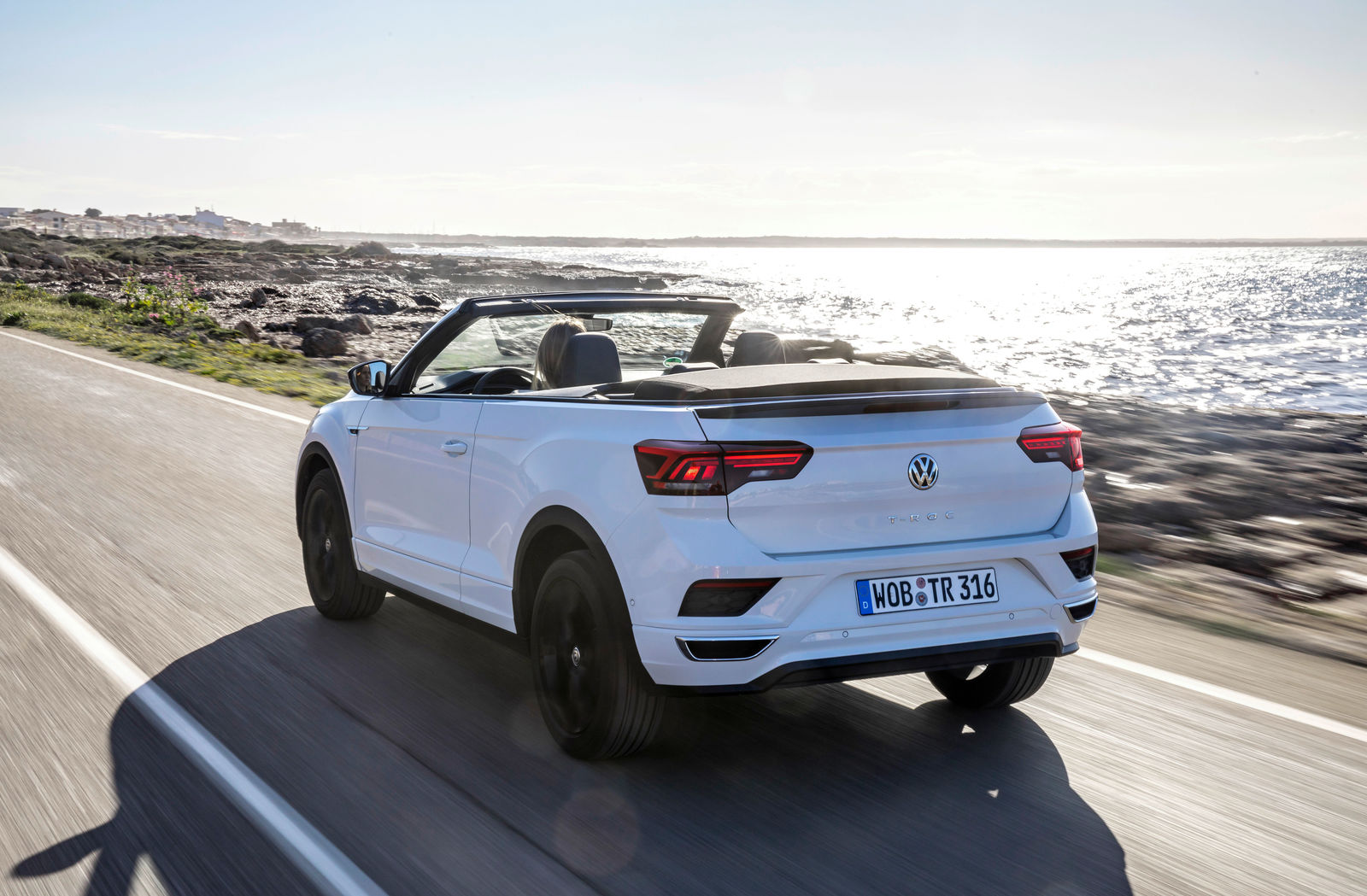“Accept no roof”. The T-Roc Cabriolet transcends boundaries, thereby combining the best of two worlds: it stands for both utility and freedom, as well as performance and comfort. The open-top Volkswagen crossover is just as much at home in an urban setting as it is pursuing outdoor adventure. The design itself arouses positive emotions, its stylish coolness adding a touch of colour to everyday life. The T-Roc Cabriolet is an ambassador for vitality and driving fun. It appeals to enterprising individuals – at both a rational and an emotional level.
The T-Roc evolves into the T-Roc family. The T-Roc Cabriolet draws on the technology of the T-Roc, which is based on Volkswagen’s versatile Modular Transverse Matrix (MQB). The letter T – derived from Tiguan and Touareg – identifies the T-Roc as an SUV, while the word “Roc” positions it as a crossover capable of shaking up the compact SUV segment – which it is doing very successfully: more than 360,000 vehicles had been sold by the end of 2019. The T-Roc R was added as a new family member in March 2019 – a high-performance variant with an output of 221 kW/300 PS. The T-Roc Cabriolet will shortly be launched on the market in Germany and other European countries.
Volkswagen’s SUV offensive Volkswagen is seeking to further expand its range in the booming SUV segment. It currently includes the large SUVs Touareg, Atlas and Teramont, the compact Tiguan and T-Roc and the small T-Cross. The new T-Roc Cabriolet is targeting the fastest-growing segment in the automotive sector – the compact SUV class. The open-top crossover is built at the plant in Osnabrück. It is a site with a longstanding tradition of producing convertibles: after all, it was here that the open-top variants of the Beetle and Golf came off the assembly line.
A tradition of openness. It was as long ago as 1949 that Karmann started producing the Beetle Cabriolet in Osnabrück, supplemented by the Karmann Ghia Cabriolet from 1957 to 1974. More than 330,000 units of the open-top Beetle were sold and it was not discontinued until 1980 – Volkswagen had already showcased the Golf I Cabriolet the previous year. The latter remained in production until 1993 and was followed by the Golf III Cabriolet (1993 to 1998), the Golf IV Cabriolet (1998 – 2002) and the Golf VI Cabriolet (2011 – 2016). A total of more than 770,000 Golf Cabriolet were produced over the course of four generations.
All Golf Cabriolets were built in Osnabrück, while the Eos with its steel folding roof was produced in Palmela (Portugal) from 2006 to 2015. From 2003 to 2010 the New Beetle Cabriolet was manufactured at the Mexican plant in Puebla, followed by the Beetle Cabriolet from 2011 to 2019.
Off-road vehicles with a military background. Volkswagen built light off-road vehicles without a fixed roof for many years. The Type 181 (1969 to 1980) and the Type 183 (1978 to 1988) – also known as the Iltis – were produced for military purposes. By contrast, the cheerful, colourful style of the two-seater buggies based on the Beetle was geared strictly towards civil use. These were sold in the 1960s and 1970s as conversion or assembly kits, mainly in the USA, with Karmann producing some 1,800 for Volkswagen.
Crossover 1990. A conceptual predecessor to the T-Roc Cabriolet that is less well-known was the Biagini Passo. As long as 30 years ago, it likewise combined the robustness of an off-road car with the open character of a convertible. Italian manufacturer ACM merged the all-wheel drive technology of the Golf II Country with the open body of the Golf I. Only about 100 of these were built between 1990 and 1993.
